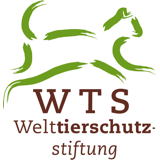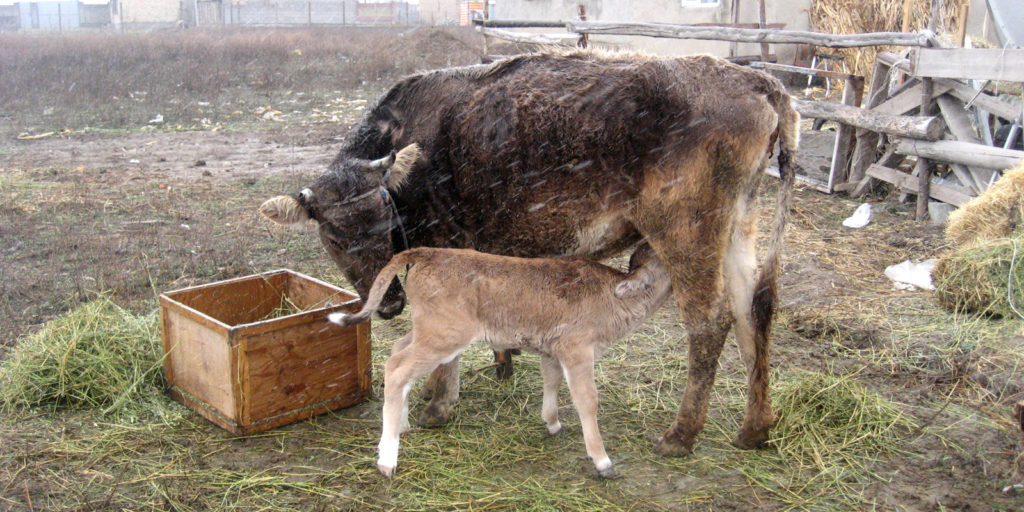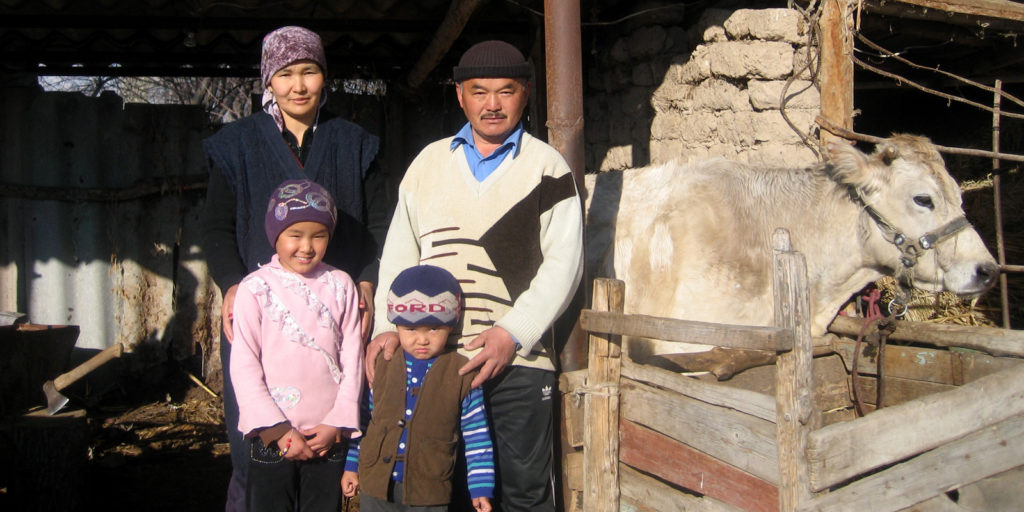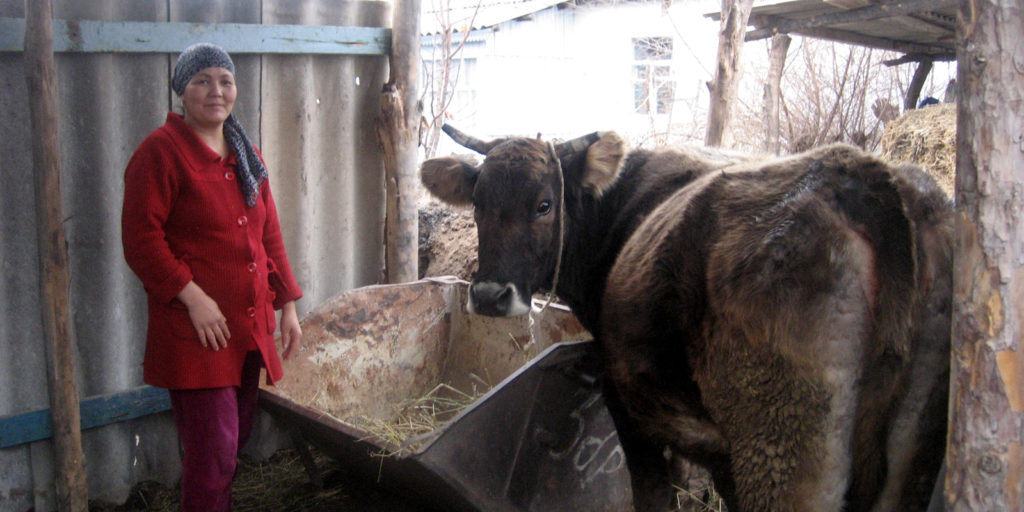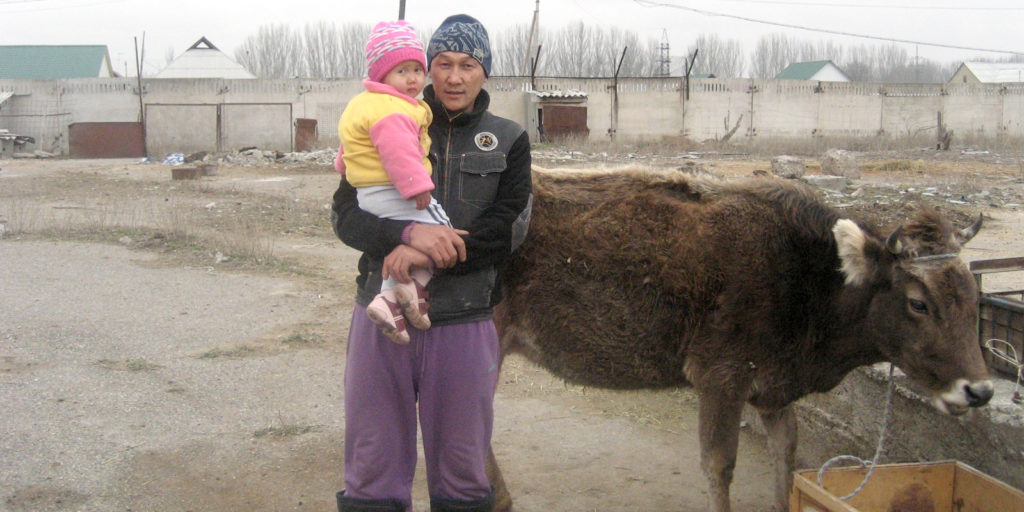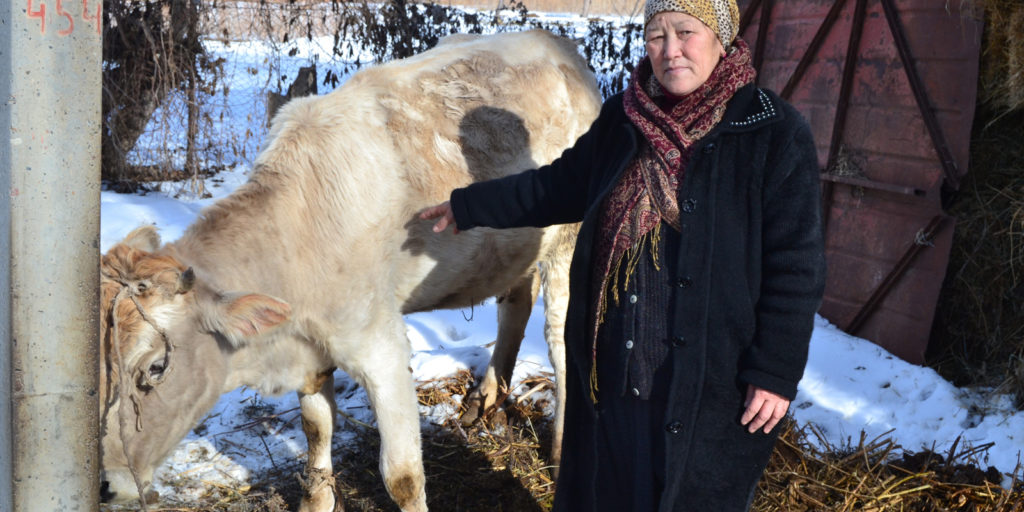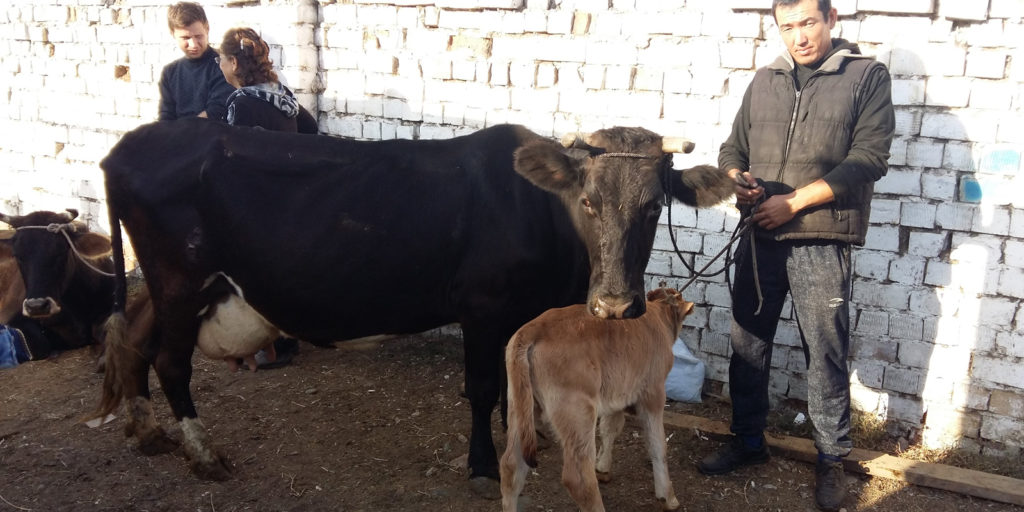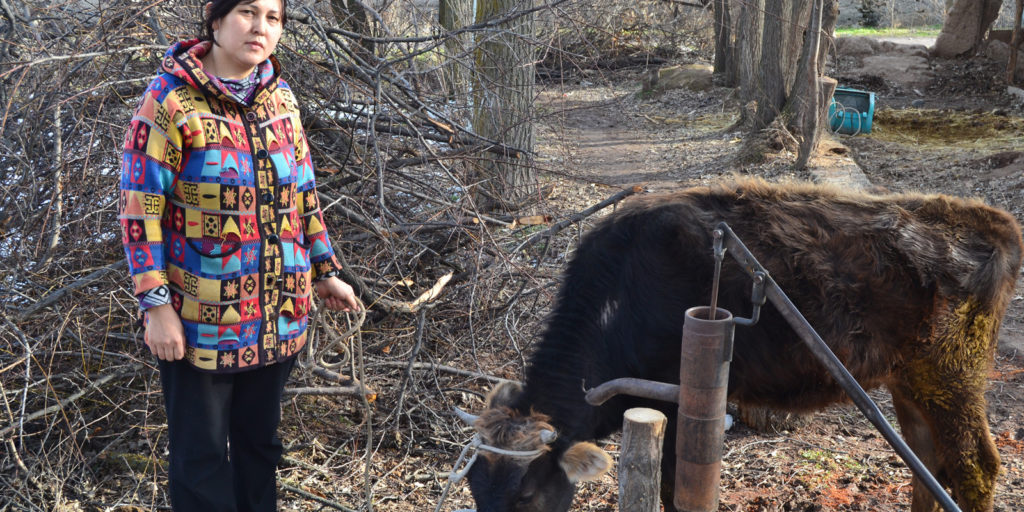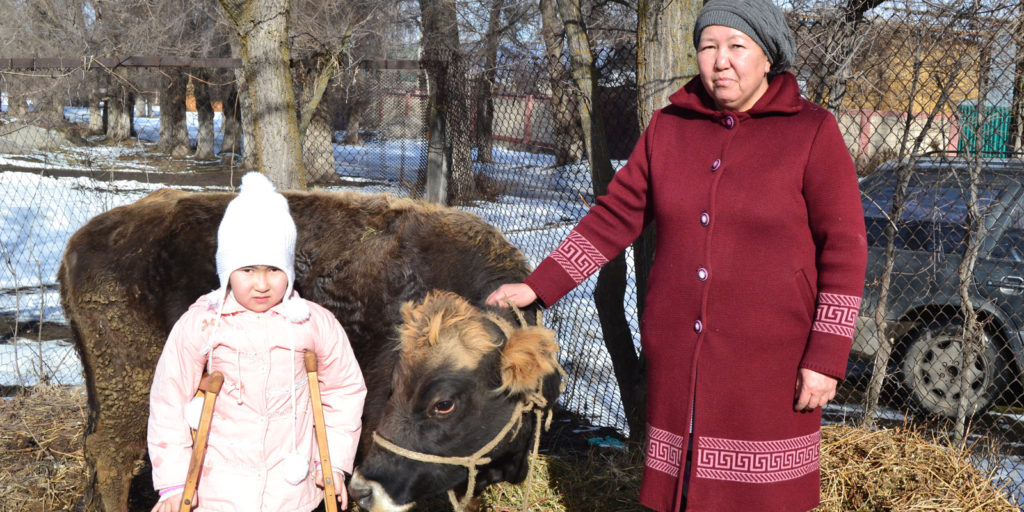Cow husbandries in Kyrgyzstan
In development cooperation there is a popular instrument to fight poverty: the donation of livestock. This has been used in Kyrgyzstan, too. But in the process animal welfare and the actual situation of the benefiting families are often neglected.
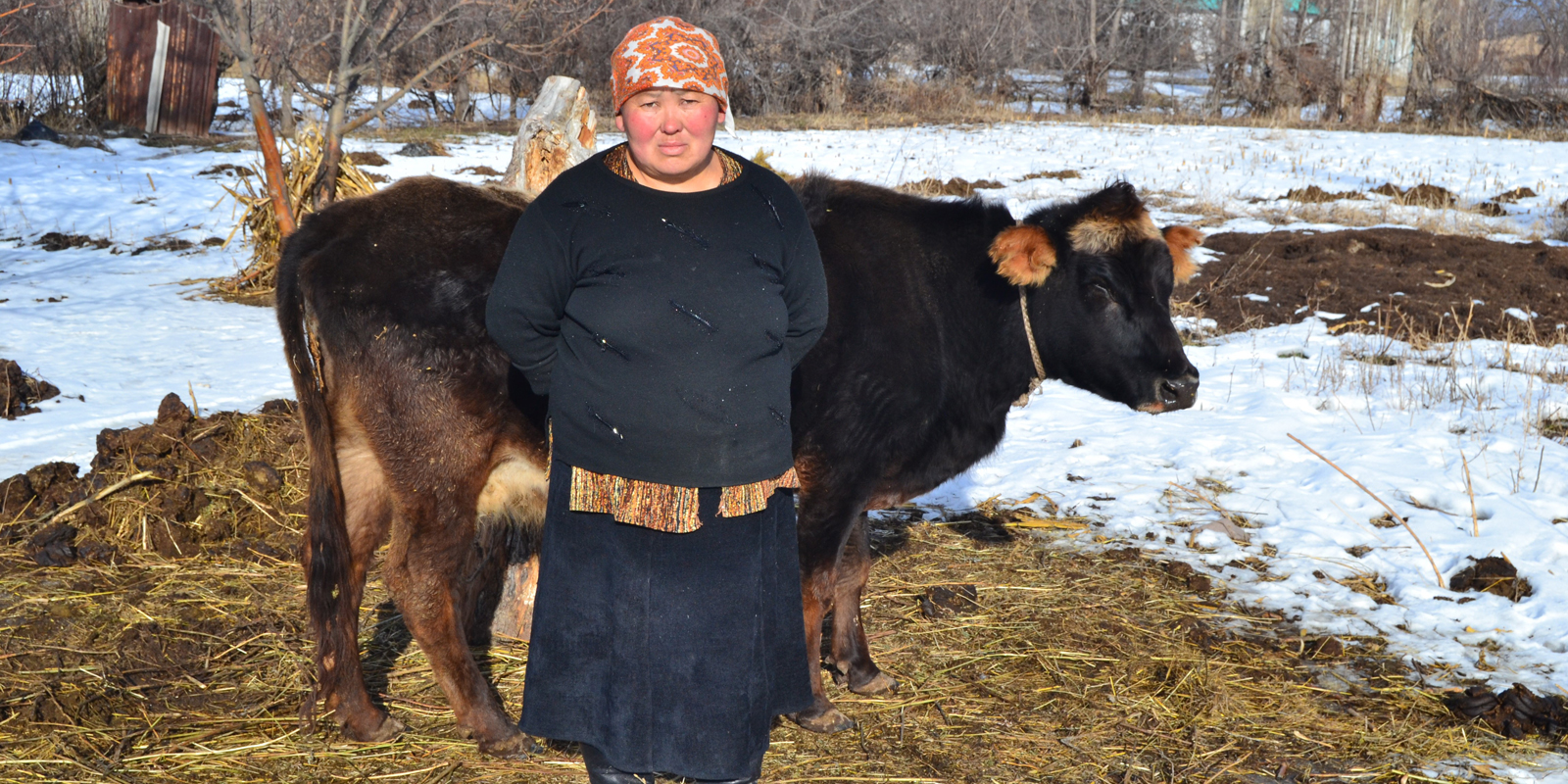
Uplift, an association advocating for families with chronically ill children, wanted to explore to what extent a project, financed by Rotary Kyrgyzstan, can actually lead to a sustainable project for humans and animals. In order to answer this question, Uplift and WTS undertook a study between October 2016 and February 2017 in which they questioned beneficiaries, officials from several local councils, private and state associations of veterinarians, project staff and volunteers, as well as other NGOs.
Uplift, for example, had major concerns that no veterinary expertise would be available for the cows, that the cows might not be kept properly and that there might not be enough funds for additional feeds in winter. The organisation assessed those concerns as risky and problematic for the success of the project.
The purpose of cooperation with WTS was to develop criteria for the well-being and health of cows, to examine the animals at the cattle market and to analyse socio-economic impacts on the families.
The results of the investigation period confirmed Uplift’s concerns:
At the cattle market, some of the animal were assessed by the vet as not healthy enough or at an inappropriate age to be sold. Without veterinary supervision that deficiency would not have been detected. Most of the new cow owners expressed that they are in need of veterinary advice, especially in terms of veterinary care. As one of the results, it was agreed that animal welfare standards for the cows had to be defined. There is also a need to clarify who gets a cow and which framework conditions have to be fulfilled. The selection of families must be carefully made by taking into account capacities, general conditions for cow husbandry and the interest on a species-appropriate keeping. Simultaneously, the families have to go through a complex training on species-appropriate cow husbandry and cow welfare before receiving the cow. Also required is systematic veterinary care and a mandatory cooperation with the local private and state contact points. With regard to the socio-economic profit, a brief analysis of the respective household budgets and the estimated profitability is advisable.
The study shows that income-generating measures also need a precise analysis of the environment. Nowadays there is a better understanding of the housing conditions and the overall condition of the animals. The people questioned during this study were made aware of the topic of animal welfare in many ways and the owners‘ challenges were better understood.
It became clear, that the cows would have suffered without Uplift’s sustainability management. But if a cow (or better yet a sheep or a goat) is used in the right way, they can be an important supportive measure for the family as increased milk and dairy products are available and the financial situation will improve.
The study, which has delivered interesting results for existing and future projects with livestock in Kyrgyzstan and anywhere else, was funded by WTS.
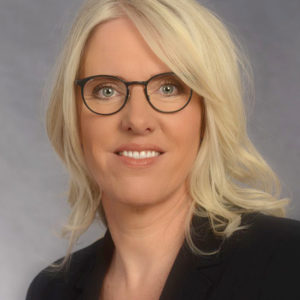
For more information, please contact:
Karin Siegmund
Director Welttierschutzstiftung
E-Mail: ks@welttierschutz.org
Tel.: +49(0)30 – 9237226-0
Welttierschutzstiftung
Reinhardtstr. 10
10117 Berlin
Germany
